It is not a new breed of transformers, it is the future of biorobotics. This is a moment in history where science fiction coexists with daily life. Every day technologies are announced that until the previous day seemed remote and unattainable. In this article we will know what Nanobots are and what are their possible applications.
Let's start with defining what a nanorobot is.
They are nanoscopic robots or what is the same thing a robot about the size of an atom. Nanotechnology studies the matter from a level of nanometric resolution. 1 nanometer (unit of length) corresponds to one billionth of a meter. We must know that an atom is less than 1 nanometer, so we say that the size of a nanobot should be similar to that of an atom. Nano means dwarf and is still smaller than micro.
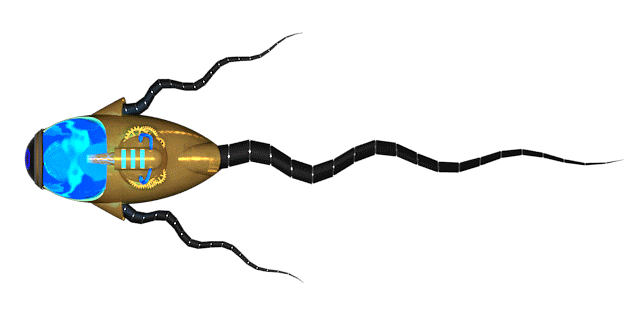
The study of nanobots is within the science of nanorobotics or nanotechnology and can also be called nanobots, nanoids, nanites, nanoagents, nanorobots or nanomachines.
Future or Reality The Problem of the Nanobots
If we talk about the future, imagine that you go to the doctor to receive treatment for a persistent fever. Instead of giving you a pill or an injection, the doctor sends you to a special medical team that implants a small robot in your bloodstream. The robot detects the cause of the fever, travels to the appropriate system and provides a dose of the medication directly to the infected area. Future or reality? For the future.
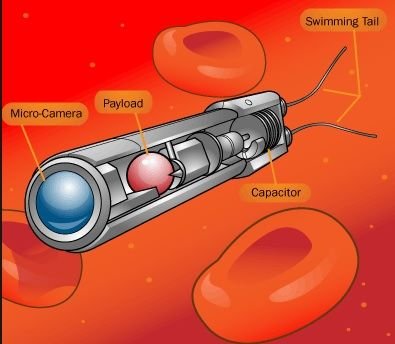
Nanorobotics
It is the field of emerging technologies that creates machines or robots whose components are or are close to nanoscale (10-9 meters). More specifically, nanorobotics refers to the nanotechnological engineering of the design and construction of nanorobots, these devices having a size of about 0.1 to 10 micrometers and are constructed with nanoscale or molecular components. The names of nanobots, nanoids, nanites, nanomachines or nanomites have also been used to describe these devices that are currently in research and development.

Theory of the nanorobotics
According to Richard Feynman, it was his former graduate student and collaborator Albert Hibbs who originally suggested to him around 1959 the idea of a medical use for Feynman's theoretical micromachines (see Nanotechnology). Hibbs suggested that certain types of repair machines could someday be miniturized to the point that in theory it could be like "swallowing the doctor," as Feynman said. The idea was incorporated into Feynman's essay published in 1959, "There's Plenty of Room at the Bottom."
Potential applications
Nanomedicine
Potential applications for the nanorobotics in medicine include preliminary diagnostics and dosing of drugs to attack cancer, biomedical instrumentation, surgery, pharmacokinetics, diabetes monitoring, and health care. It is hoped that future medical nanotechnology will employ injected nanorbots in the patient to work at the cellular level. The nanorrobots for medical use should be non-replicating, since replication would undesirably increase their complexity and interfere with their medical mission.
Another useful application of nanorobots is to assist in the repair of tissue cells along white blood cells. The recruitment of inflammatory cells or white blood cells (including neutrophils, lymphocytes, monocytes and mast cells) to the affected area is the first response to tissue damage. Due to the small size of the nanorobots these could stick to the surface of the recruited white cells, to infiltrate through the walls of the blood vessels and reach the wound site, where they can assist in the tissue repair process, possibly using certain substances to accelerate recovery.
Types of NanoBots
The two basic types of nanobots are assemblers and self-replicating or self-replicating.
Assemblers are nanobots in the form of simple cells that may be able to decipher molecules or atoms of different types, and controlled by specific programs. By their use they are also called molecular assemblers, as a reference to a structure that exists inside every cell of every living being called the ribosome which are the natural "assemblers".
Self-replicants are essentially nanobots capable of duplicating (self-replicating) themselves at high speed. This type of duplication helps the construction of large-scale applications or deployment of nanobots for large-scale tasks.
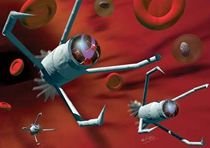
In military investigation, self-replicators can be used as a body armor for the military and capable of self-repair in case of damage. These nanorobots can also be a threat according to scientists. The "gray plague" is a threat from an army of self-replicating nanorobots out of control destroying the planet.
Nanotechnology promises more destructive weapons than nuclear ones.
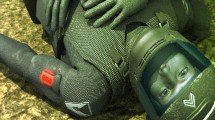
Nanotechnology promises for the next 20 years weapons of the size of a molecule that will be more destructive than the current nuclear, chemical and biological: a pen could destroy an entire city. Any country or terrorist group will be able to dispose of them because the materials necessary for their manufacture will be everywhere due to the multiple uses of nanotechnologies. Although the defensive capabilities of the pioneer countries will be improved, the nanoarms will change the rules of deterrence and the current global power schemes. Experts warn of the need to adopt legal measures and preventive policies.
Nanotechnology can lead to a new generation of weapons with a capacity for destruction and deterrence superior to those of nuclear, chemical and biological weapons, which will be available to any small country or terrorist group, warns Signal magazine, belonging to the Armed Forces Communications and Electronics Association.
Nanotechnology is the development and practical application of structures and systems on a nanometer scale: between 1 and 100 nanometers (one nanometer is one billionth of a meter). Nanotechnology is therefore concerned with the manufacture and control of structures and machines the size of molecules.
The most promising applications of this science, which has not yet been fully developed, are energy, agriculture, water treatment, disease treatment, drug administration, food processing, pollution, construction, Health monitoring and pest detection and control.
But nanotechnology also promises advances in another field no less significant, the arms industry, although the experts do not completely agree on what foreseeable evolutions that the technology of the smallest can contribute to defense systems in the coming decades.
In the short term, nanotechnology will lead to lighter and stronger materials with properties different from those of the materials we know today, which will mean an important transformation of weapons systems.
The properties of these materials can be modified and controlled as desired: smart fibers that can change their color, electronic characteristics or their shape; intelligent systems or super materials, made with atomic precision components, which can lead to molecular structures with high electrical or power conductivity.
Weapons of the future
In the longer term, nanotechnology will serve to develop intelligent biological weapons, capable of seeking and harming defenseless humans. In a single suitcase could fit millions of weapons of this type, loaded with destructive capacity.
The nanorods can be directed much more accurately than the current ones and will cause uncertainty regarding the capabilities of the adversary. They will also give less time to respond to an attack and improve the ability to direct the destruction of enemy resources.
Materials capable of being reconfigured will also be available to the military. Thanks to nanotechnology, these intelligent materials will change shape as much as human muscles.
For example, on the battlefield a backpack could be transformed into a weapon quickly, then into a tent, and then into a weapon again. These weapons will be invisible to the satellites and to the human eye, so they will be out of control. That's where his main danger comes from.
Communications and sensors

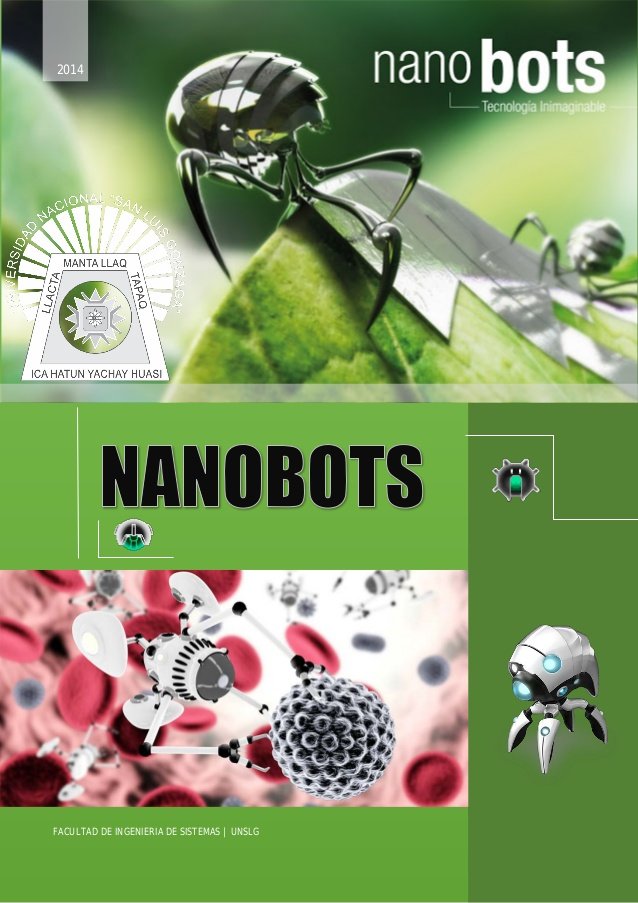
Another of the military aspects related to nanotechnology refers to communications, says Signal magazine. In another article, the magazine tells the plans of the New Jersey Nanotechnology Consortium, founded three years ago by Lucent Technologies and the Bell laboratories, which include important nanotechnological developments related to defense.
What is intended with communications is to increase the capacity of access between satellites and ground stations through the use of nanotechnologies. Sensors based on nanotechnologies is another objective of these ongoing investigations. They would allow to observe the terrestrial surface and the bottom of the sea by means of lenses that work like the human eye.
It also works on nanosensors with the same olfactory capacity as a dog, as well as nanomicrophones that eliminate background noise from a battlefield, cleaning communications.
The creation of a biological man-machine interface, capable of getting a weapon to recognize its owner and only act under its orders (like a dog), is another field of research for military purposes, as well as the creation of nanoparticles that generate light for telecommunications without the need for laser.
The detection of weak magnetic fields, such as that of a rifle or that of a submarine, capable of activating anticipated defensive measures that neutralize an attack, is another field of military research in nanotechnologies.
More capable weapons
But nanotechnology will not only serve to create new generations of weapons, but existing weapons can increase their destructive capacity to unsuspected limits.
For example, the rifles will be more powerful, and their bullets can be directed towards the desired target even with DNA readings. The aviation materials will be lighter and more efficient and, being made with a minimum amount of metal, will be much more difficult to detect by radar.

In general, it is considered that weapons based on nanotechnologies will have a mass destruction capacity superior to that of nuclear, chemical and biological weapons. The dissemination of these nanotechnological weapons will be inevitable and nuclear dissuasion (which prevents an attack because it involves the destruction of the two belligerent countries) will be meaningless because any country can defeat its enemy in a first attack without possible reprisals.
In this regard, you can think of the launch of nanorobots from an airplane on the enemy field, with the capacity to damage the adversary electronics, inflitrarse in the soldiers' bodies or sleep in their blood until they are activated by a signal ... They are some of the plausible scenarios designed by military strategists.
The big difference with respect to these conventional weapons is that nanotechnological weapons will be easily accessible to small countries and terrorist groups, since the materials necessary for their manufacture will be everywhere due to the multiple civil uses of nanotechnologies.
Defensive advantages:
From another perspective, nanotechnologies can also provide great advantages, such as improving the defensive capacity of a country by detecting a possible aggressor with time or having arms the size of a ballpoint pen capable of destroying an entire city.

Investigations under way in the United States are aimed at obtaining meshes capable of protecting soldiers from radioactivity and which could at the same time serve as compresses for wounds. Other nanotechnological research aims to reduce the stress of soldiers and increase their ability to move on the battlefield.
Another theoretical advantage is that nanotechnologies can provide cleaner and safer weapons that cause less collateral damage than conventional ones, without forgetting the experimental capabilities of spying nanorobots.
However, the first concern with regard to the development of these weapons is toxicity. Products that at non-molecular levels are not toxic, allowed even by health ministries in food, could be enormously toxic at the nano level.
According to Signal, nanotechnology will mean a great industrial revolution that will not be exclusive to the United States, which is still leading the sector, but will also occur in other countries at the same time.
The United States is one of the countries where nanotechnology is being developed the most, but China is especially ambitious in this field. The number of engineers specialized in this branch of technology in China is greater than in the United States, which poses a risk to the Americans, who will not be able to face it in 20 or 30 years. India is also seriously investigating in this sector.
Precautionary measures
To avoid the possible problems arising from this development, in each nation should be evaluated the consequences of the development of this industry, and legislative needs. In the United States, several companies are already working in nanotechnology, so the development of this sector could be faster than expected, and its consequences have not yet been measured by the relevant institutions.
As far as the military field is concerned, legislation should be put in place quickly. The dangers of nanotechnology are unprecedented. According to American specialists, work in nanotechnology in Saudi Arabia, for example, could easily fall into the hands of al-Qaida or any unscrupulous terrorist group.
Any country could make inappropriate use of this cutting-edge technology, with such harmful purposes that they would have no precedent. How could a series of invisible weapons be legislated? In what way could you control the damage you would be able to do?
That is why policies that control nanotechnology are increasingly necessary, especially from the next 15 years, warns the Foresight Institute of Palo Alto, in California. The work of this institute is to help prepare society to face the most advanced technologies, especially nanotechnology.
In this way, armament nanotechnology could destabilize international relations, since it would make it impossible to monitor enemy countries, increase the possibility of attacking people instead of places and also increase the number of countries with global destruction capacity. . It could also end the control of the most powerful countries.
If the nanotechnological scenarios foreseen in the military field are confirmed, where the race for leadership has already begun, we would enter into an unprecedented historical situation whose dangers are increasingly alerted by the experts who are investigating in this field.
Congratulations @barbieprzcdo! You have completed some achievement on Steemit and have been rewarded with new badge(s) :
Click on any badge to view your own Board of Honor on SteemitBoard.
For more information about SteemitBoard, click here
If you no longer want to receive notifications, reply to this comment with the word
STOPNot sure if this is scary or exciting! Maybe a bit of both. Thanks for the info!